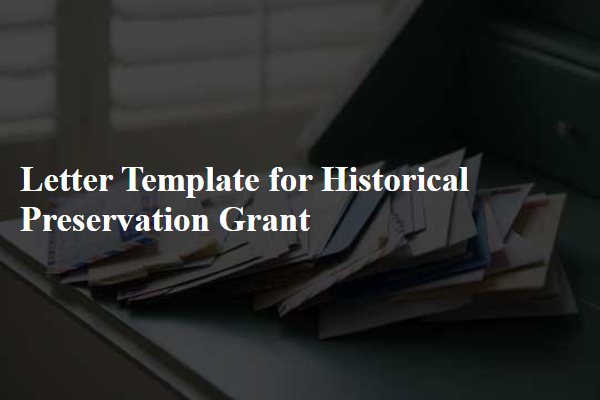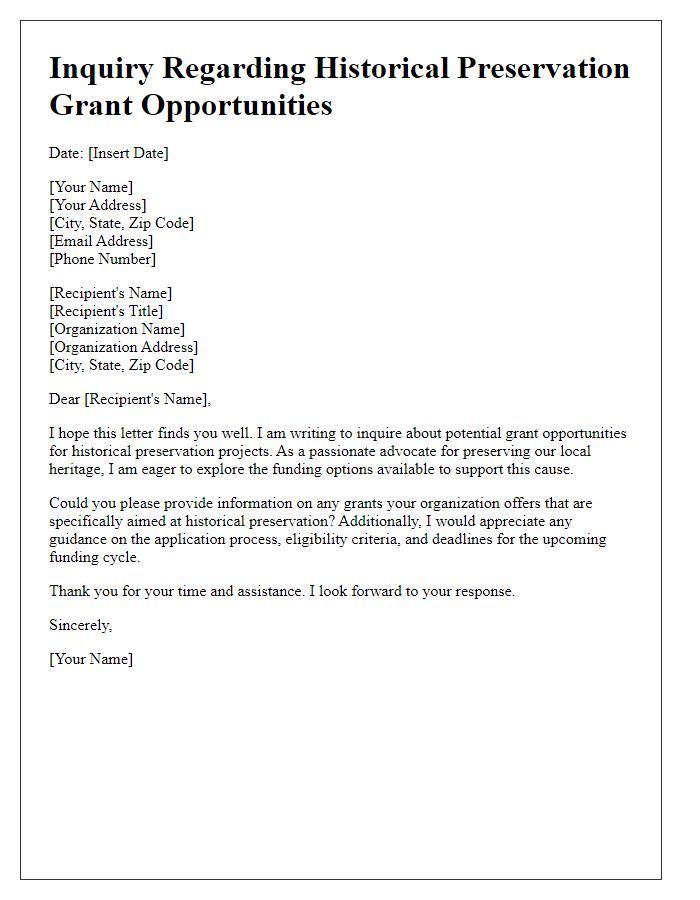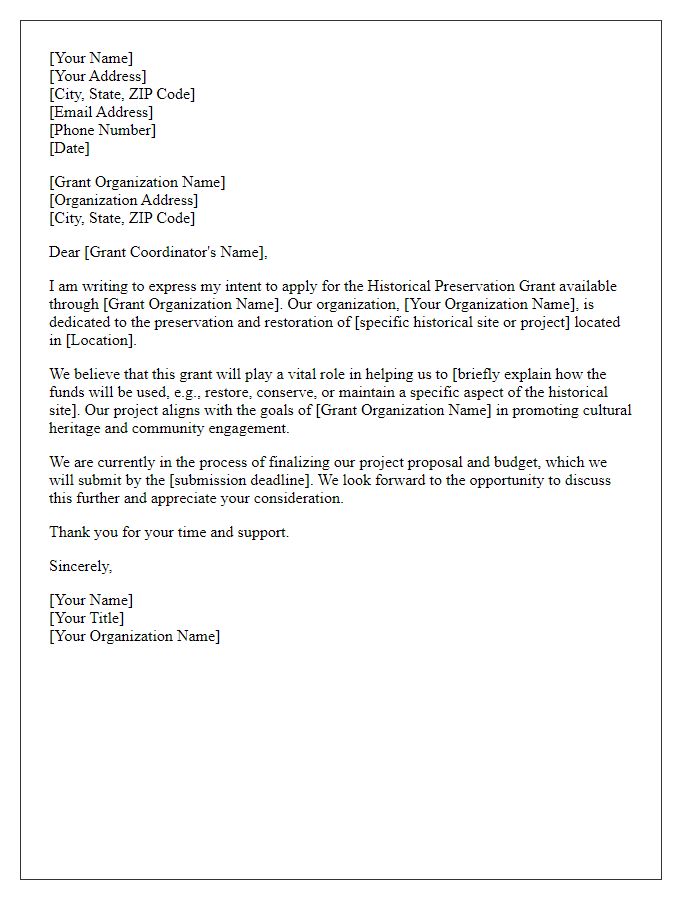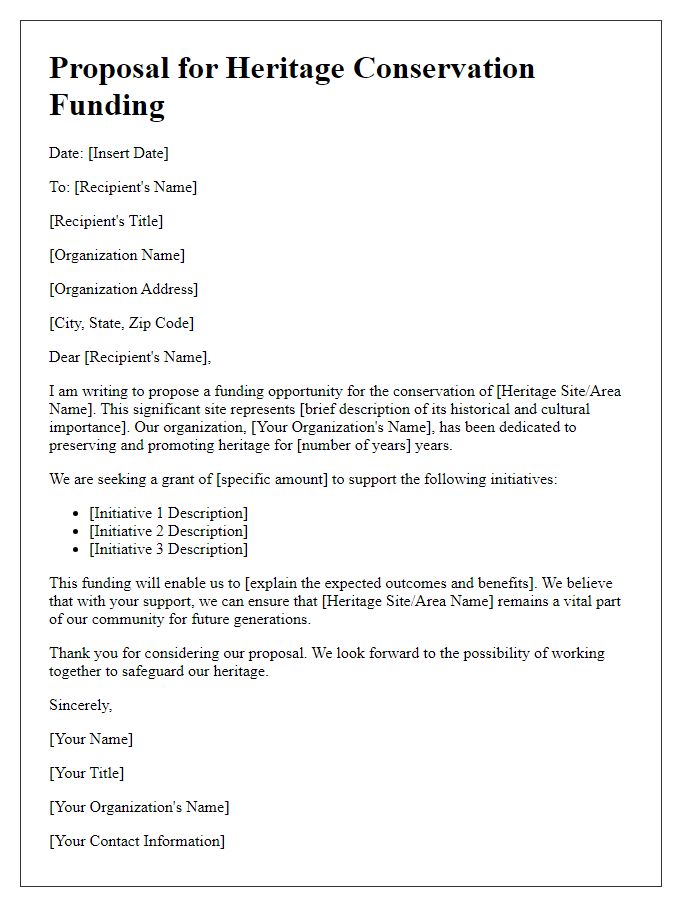Are you ready to make a lasting impact on your community's history? Seeking a historical preservation grant can be a fantastic opportunity to restore and protect important landmarks and heritage sites. In this article, we'll explore essential tips on crafting a compelling letter that highlights the significance of your project and appeals to potential funders. Join us as we dive into the details and discover how you can secure funding to preserve our shared history for future generations!

Project Description and Objectives
The historical preservation project focuses on the restoration of the Old Town Hall, built in 1836 in Springfield, Massachusetts, a significant landmark reflecting early American governance. This initiative aims to repair the crumbling facade, preserve original architectural elements like the intricate cornices and the distinctive belfry, and upgrade the interior to house a new public exhibit on local history. Objectives include securing extensive community engagement through workshops, enhancing educational opportunities by collaborating with local schools, and establishing a sustainable maintenance plan post-restoration. The project will also document the restoration process, contributing to the archives of the Springfield Historical Society, ensuring the preservation of local heritage for future generations.
Historical Significance and Impact
Historical preservation grants play a crucial role in safeguarding culturally significant sites, artifacts, or documents that define a community's heritage. These grants often target locations such as the Gettysburg Battlefield in Pennsylvania, a pivotal site of the American Civil War, which attracts over 1 million visitors annually, or the historic district of New Orleans, renowned for its unique Creole architecture and vibrant cultural influences from different eras. The preservation of these areas not only maintains their physical structures but also fosters educational opportunities, attracting historians and tourists alike. This effort contributes to local economies while promoting awareness of important events like the Civil Rights Movement, represented through preserved locations such as the Edmund Pettus Bridge in Selma, Alabama, which was the site of the Bloody Sunday march in 1965. Overall, historical preservation enhances community identity and provides invaluable resources for future generations.
Detailed Budget and Funding Needs
The detailed budget for the historical preservation grant encompasses various essential components aimed at safeguarding cultural landmarks. Total estimated costs amount to $500,000, allocated across multiple categories. Restoration work on the 19th-century Victorian structure, located in Salem, Massachusetts, requires $300,000 for materials such as period-appropriate wood and paint. Labor costs, estimated at $150,000, involve skilled craftsmen specializing in historical techniques. Additional funds of $25,000 are earmarked for comprehensive research to document the building's history and architectural significance within the local heritage framework. A contingency fund of $25,000 is included, addressing unexpected expenses that may arise during the project, ensuring the preservation of this significant historical asset.
Preservation Methods and Techniques
Preservation methods and techniques are essential for maintaining the integrity of historical artifacts, structures, and documents, particularly in sites such as the Gettysburg Battlefield (Pennsylvania, USA) or the ancient city of Pompeii (Italy). Climate control measures (maintaining relative humidity between 30-50% and temperature between 68-72 degrees Fahrenheit) are crucial for preventing deterioration of fragile materials like parchment and wood. Techniques such as digital preservation, utilizing high-resolution scanning technology (minimum 300 DPI) for archival photographs, ensure long-term accessibility while minimizing physical handling. Conservation methods, including cleaning with pH-neutral solvents or restoring original materials with reversible treatments, are vital to prolong the lifespan of treasured artifacts. Regular assessments (every three to five years) and the application of protective coatings can also enhance durability against environmental stressors, ensuring that future generations can appreciate these historical treasures.
Community and Stakeholder Engagement
Community engagement initiatives, such as workshops and public forums, invite residents to participate actively in the preservation of historical landmarks, like the iconic St. Mary's Church (established in 1850) located in downtown Springfield. Stakeholders, including local historical societies and preservation experts, collaborate to develop educational programs highlighting the significance of the town's heritage, emphasizing events like the annual Heritage Festival that attracts over 1,500 attendees each year. Feedback mechanisms, such as surveys and online platforms, provide avenues for community members to share their insights on preservation strategies, ensuring diverse voices are heard in decision-making processes. Together, these efforts foster a sense of ownership and pride among residents, reinforcing the commitment to conserve Springfield's rich historical narrative for future generations.
Letter Template For Historical Preservation Grant Samples
Letter template of request for financial assistance in historical preservation

Letter template of inquiry regarding historical preservation grant opportunities

Letter template of commitment to community heritage preservation project

Letter template of project outline for historical site restoration funding










Comments